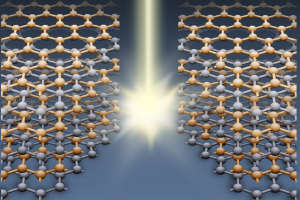Scientists from the University of Manchester have shown that it is possible to use ‘wonder material’ graphene as a building block to build novel three-dimensional crystal structures.

The new technique enables fabrication of electrical devices with novel properties by placing sheets of graphene between insulating layers, thus providing new approach to physics research.
In a paper reported in Nature Materials, the researchers have described a new side-view imaging method that is capable of visualizing the individual graphene atomic layers of the nanomaterial-based devices. What they discovered was the structures were near-perfect even when over 10 variety of layers were utilized to fabricate the stack.
This finding signifies that the latest methods of separating graphene are an important progress towards atomic level engineering. This advancement provides more credence to graphene’s potential as key component in advanced computer chips. The side-view imaging technique involves the removal of a thin section from the center of the device. The researchers extracted the desired section of the device by cutting the graphene surface and plowing a trench on either side of the section using an ion beam.
Dr Sarah Haigh from the School of Materials of The University of Manchester stated that since the slices are of mere 100-atom thick, the researchers were able to image the individual graphene atomic layers in projection. The researchers discovered that the observed roughness of the nanomaterial has a correlation with its conductivity. They also found that the layers were completely clean and any trash available from production separated as isolated pockets, thus maintaining device performance. The researchers intend to utilize this novel side-view imaging technique to optimize the performance of their graphene devices.